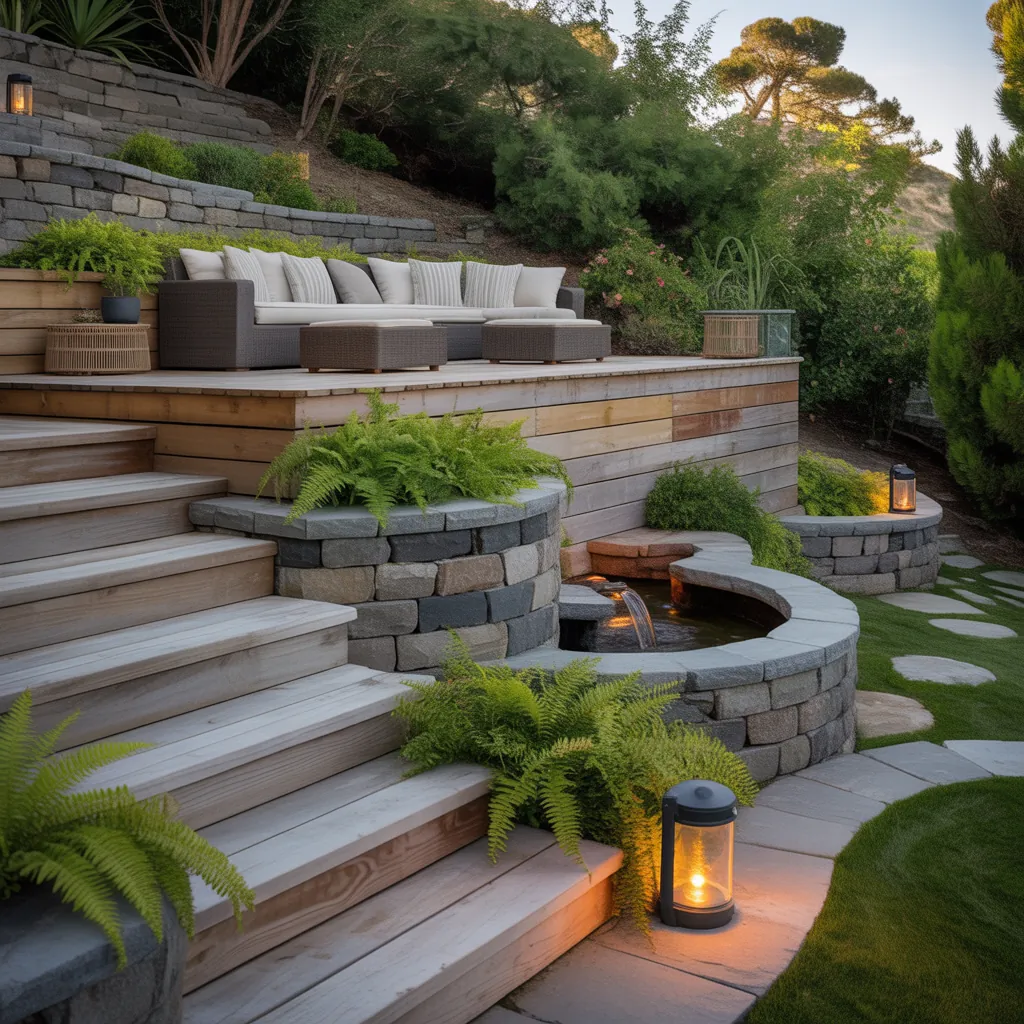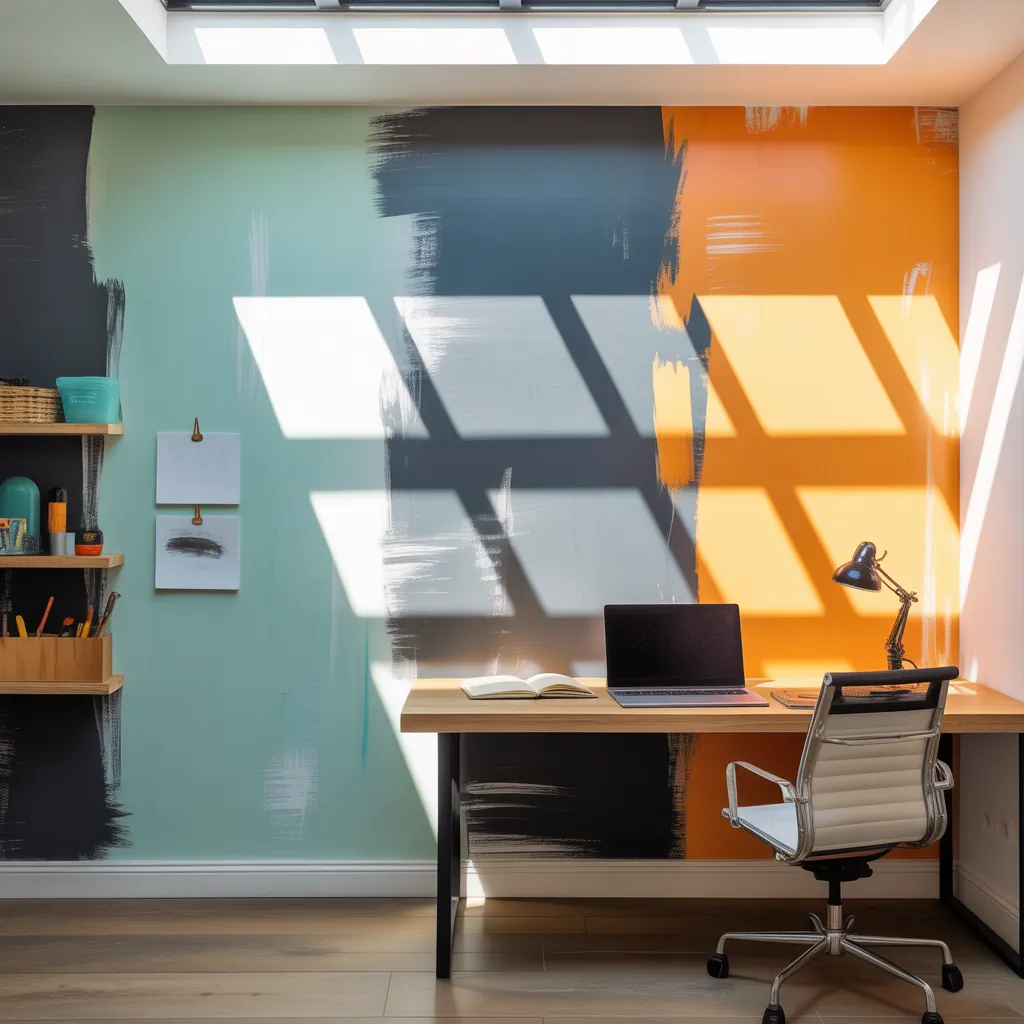Staring out at a steep, patchy slope behind your house and wondering how to turn it from a maintenance headache into your favorite outdoor room? If you’ve ever thought “my yard is too steep for a patio,” you’re not alone. Many homeowners look at a hillside and see obstacles—erosion, mowing trouble, unusable space—but with the right hill backyard ideas and plans you can build terraces, create a garden oasis, or add steps, decks, and a fire pit that feel intentional and manageable.
Why sloped yards are an opportunity, not a problem
Sloped properties often have better drainage, unique sightlines, and natural privacy. A planned hillside landscape can increase usable square footage, reduce maintenance, and add character that a flat lot can’t match. Before you start, it’s important to assess grade, soil stability, and local building codes—these early steps make DIY hillside projects safer and more successful.
Top hill backyard ideas and plans for every slope
Below are practical, inspiring solutions—from low-cost DIY fixes to more ambitious construction—organized by function and difficulty. Each idea includes quick tips so you can decide what fits your yard and skill level.
1. Terraced planting beds (best for erosion control)
- Create short retaining walls to form flat planting terraces.
- Use native perennials and groundcovers like sedges, creeping thyme, and ornamental grasses to stabilize soil.
- Tip: Build terraces in staggered widths to create seating nooks and planting variety.
2. Multi-level patio or deck seating areas
- Stack small patios or a main deck with stairs to connect levels.
- Use composite decking or natural stone for a durable finish.
- Tip: Add a low retaining wall that doubles as extra seating.
3. Stairs and switchback paths for safe access
- Install simple timber or stone steps, or build a switchback path with landings for steep grades.
- Lighting and handrails make these safer at night.
4. Rock gardens and dry creek beds
- Use rocks of varying sizes to create interest and help control runoff.
- Dry creek beds direct water away from foundations while looking natural.
5. Retaining walls: timber, block, gabion, or boulder
- Choose a wall type based on height, budget, and DIY ability.
- Tip: For walls over 3–4 feet, consult a pro and check local permits.
6. Hillside vegetable or herb terraces
- Raised beds on terraces make gardening easier and reduce soil erosion.
- Use drip irrigation and mulch to conserve water.
7. Fire pit or conversation area on a levelled pad
- Excavate a small flat area, add compacted gravel and pavers for a stable surface.
- Keep it downhill from structures and follow safety codes.
8. Observation deck or small lookout
- Elevate a deck to capture views from a hillside; add integrated seating and planters.
- Tip: Floating decks can minimize excavation and preserve slope integrity.
9. Water feature or cascading waterfall
- Use the slope to create a gravity-fed waterfall or stream that recirculates water.
- Incorporate native aquatic plants and a hidden pump basin.
10. Natural meadow slope or pollinator garden
- Turn a steep lawn into a low-maintenance meadow with native grasses and wildflowers.
- This solution reduces mowing while supporting wildlife.
Step-by-step DIY plan for building terraced retaining walls
Want to DIY terraces? Here’s a straightforward plan that covers small slopes. For large or tall walls, consult a professional engineer.
- Survey and mark the slope with stakes and string to determine terrace locations.
- Call your utility company and check local permit requirements.
- Excavate the base and level each terrace area; compact the soil and add a crushed-rock base.
- Install a drainage layer (gravel + perforated drain pipe) behind the wall footing to prevent hydrostatic pressure.
- Build the wall using your chosen material—timber sleepers for budget, segmental block for DIY-friendly and durable results.
- Backfill in layers, compacting as you go, and add topsoil for planting.
- Finish with plants, mulch, and irrigation. Stabilize edges with groundcover and landscape fabric where needed.
Practical materials, tools, and costs
Common materials: landscape timbers, concrete blocks, natural stone, gabion baskets, crushed rock, geotextile fabric, gravel, drainage pipe, and native plants. Tools: shovel, wheelbarrow, compacting plate, level, string line, and hand tamper. Budget ballpark: a simple DIY terrace can start under $1,000; professionally engineered terraces and high walls often range from $5,000–$25,000 depending on size and materials.
Maintenance and long-term care
Regular maintenance keeps a sloped landscape healthy: inspect retaining walls annually, clear drainage channels, prune and replace failing plants, and replenish mulch. In rainy climates, watch for signs of erosion and address them quickly with additional planting or small check dams.
When to hire a professional
Consult a landscape contractor or engineer if your wall will exceed 3–4 feet, if the slope shows signs of active movement, or if you need grading permits. Pros can design drainage systems, ensure proper footing, and create plans that meet local codes—saving time and preventing costly failures.
Frequently Asked Questions
1. How do I stop erosion on a steep backyard hill?
Combine terracing or retaining walls with deep-rooted groundcovers, add mulch and erosion control fabric, and install proper drainage (French drains or perforated pipe). Native plants and strategic grading slow runoff and stabilize soil.
2. Can I build retaining walls myself?
Yes for short, low walls using timber or interlocking blocks—these are DIY-friendly. For walls over about 3–4 feet, or where soil conditions are poor, hire a pro to design structural footings and drainage.
3. What plants are best for a hill backyard?
Choose drought-tolerant, low-maintenance plants with strong root systems: ornamental grasses, sedums, creeping phlox, native shrubs, and groundcovers like vinca or creeping juniper. Use trees sparingly on very steep slopes to avoid root disturbance during planting.
Design inspiration and next steps
Think in layers: hardscape, drainage, planting, and lighting. Sketch a layout, measure your slope, and choose one small project to start—like a single terrace or a switchback path—and build from there. If you enjoy hands-on projects, check out our DIY projects page for tutorials and tool guides. Looking for broader styling tips, see our home design ideas or refresh interior-exterior flow with ideas from kitchen upgrades to connect indoor and outdoor living.
Conclusion: Take the first step with hill backyard ideas and plans
A sloped yard isn’t a limitation—it’s a design advantage waiting for a plan. Whether you want a terraced vegetable garden, a cozy fire pit, or a dramatic observation deck, using smart erosion control, proper drainage, and right-sized retaining walls will turn your hillside into usable, beautiful space. Start small, plan carefully, and don’t hesitate to call in professionals when structure or permits are involved.
Ready to pick a first project? Choose one hill backyard idea and sketch it today—then share your progress or questions in the comments. Let’s make your slope work for you.



